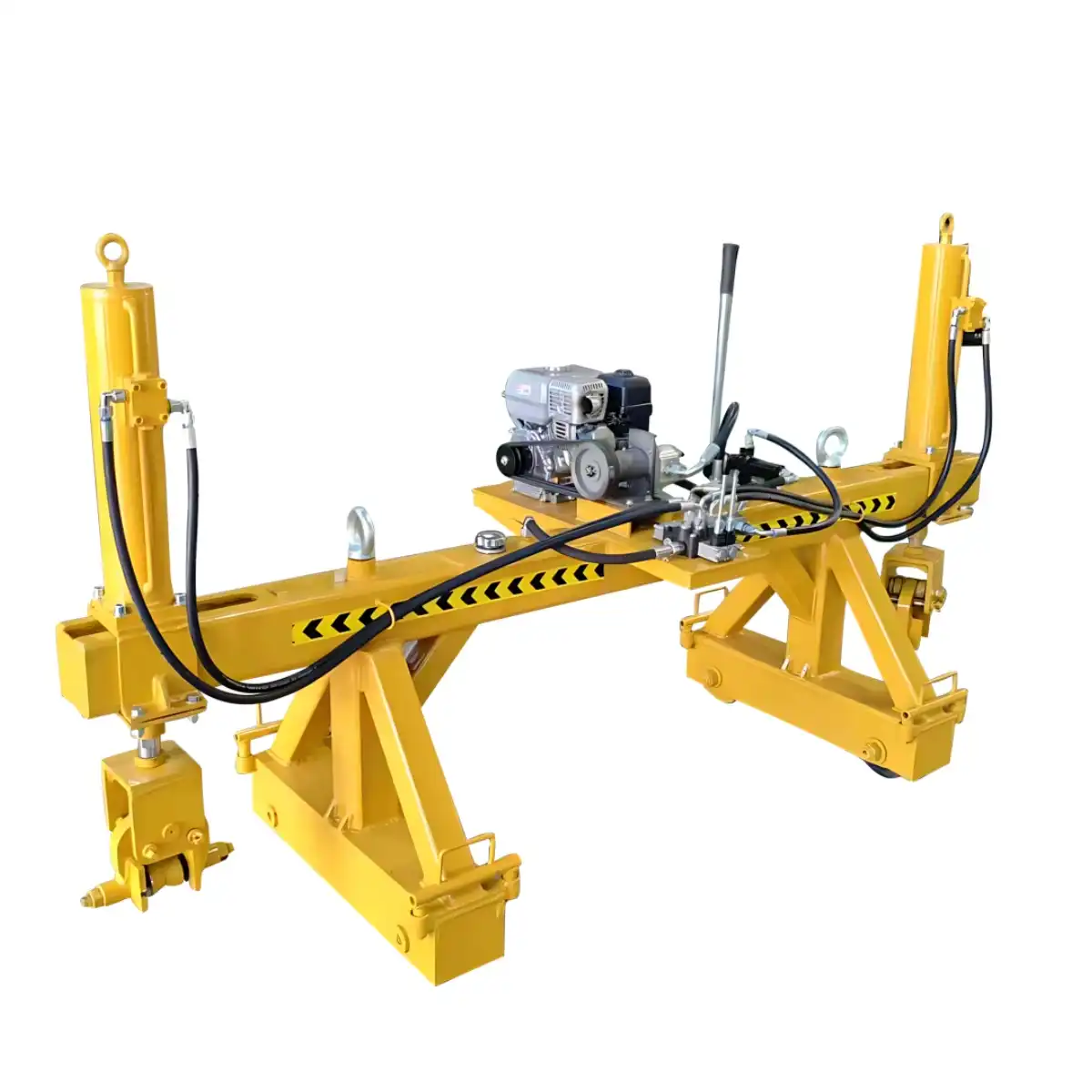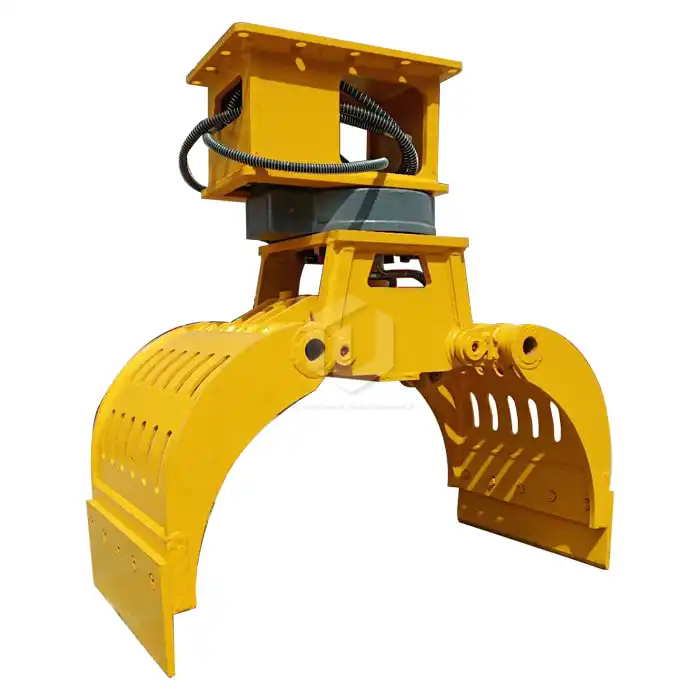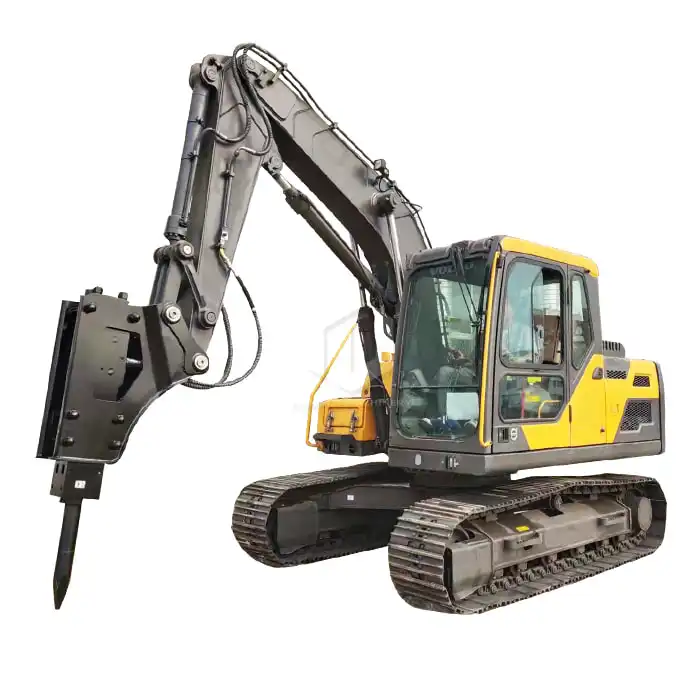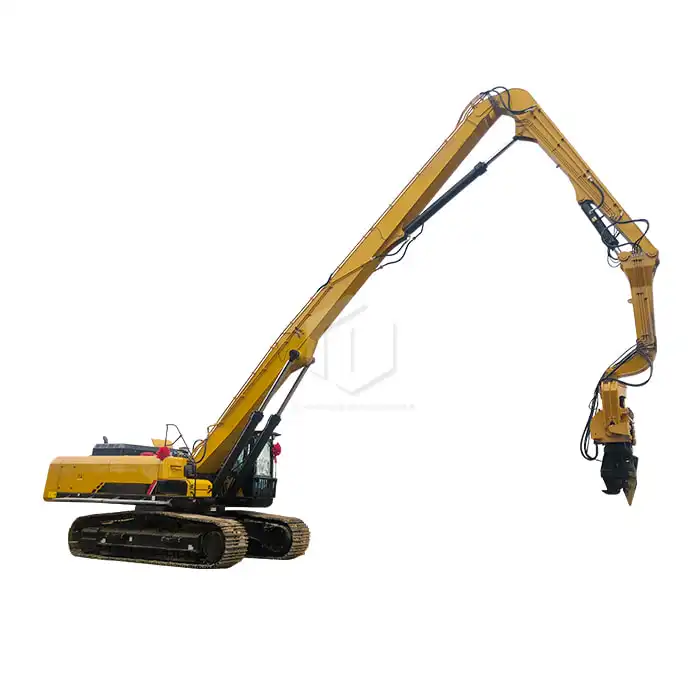How to design an excavator hydraulic rail clamp?
Designing an excavator hydraulic rail clamp requires a meticulous approach that combines engineering expertise with practical considerations. The process involves carefully balancing machine compatibility, mechanical structure, and hydraulic system design. A well-designed rail clamp enhances the efficiency and safety of railway maintenance operations, allowing for precise rail handling and secure grip.
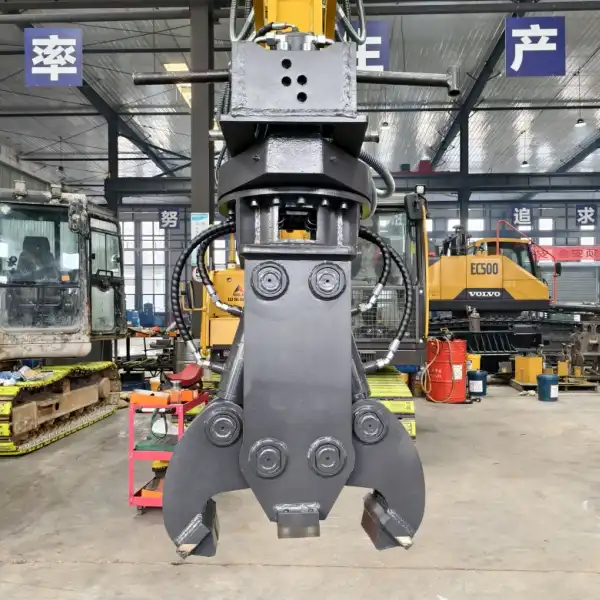
Host Machine Compatibility
Evaluating excavator specifications for rail clamp integration
When designing a hydraulic rail clamp, the first crucial step is to evaluate the specifications of the host excavator. This assessment ensures seamless integration and optimal performance of the rail clamp attachment. Begin by analyzing the excavator's weight class, hydraulic flow rates, and pressure capabilities. These factors directly impact the clamp's size, gripping force, and overall functionality.
Consider the excavator's boom and arm configuration, as this affects the reach and maneuverability of the rail clamp. The attachment point on the excavator must be carefully chosen to maintain balance and stability during rail handling operations. Additionally, examine the excavator's lifting capacity to ensure it can safely handle the combined weight of the rail clamp and the rails being manipulated.
Ensuring proper hydraulic system connection and compatibility
The hydraulic system is the lifeblood of the rail clamp, so ensuring proper connection and compatibility is paramount. Analyze the excavator's hydraulic output to determine if it can provide sufficient flow and pressure to operate the clamp effectively. Consider incorporating a dedicated hydraulic circuit for the rail clamp to prevent interference with other excavator functions.
Design the hydraulic connections to be easily accessible and compatible with the host machine's existing ports. Include quick-connect couplings to facilitate easy attachment and detachment of the rail clamp. Implement pressure relief valves to protect both the excavator and the rail clamp from sudden pressure spikes, enhancing overall system longevity and safety.
Adapting rail clamp design to various excavator models
To maximize the versatility of your hydraulic rail clamp, design it with adaptability in mind. Create a modular mounting system that can be adjusted to fit different excavator models and sizes. This approach allows for wider market appeal and reduces the need for multiple clamp designs.
Develop interchangeable components that can be easily swapped to accommodate various rail sizes and types. Consider incorporating adjustable features, such as extendable arms or variable width settings, to enhance the clamp's flexibility across different railway maintenance scenarios. By focusing on adaptability, you ensure that your hydraulic rail clamp design remains relevant and useful across a broad range of excavator models and rail applications.
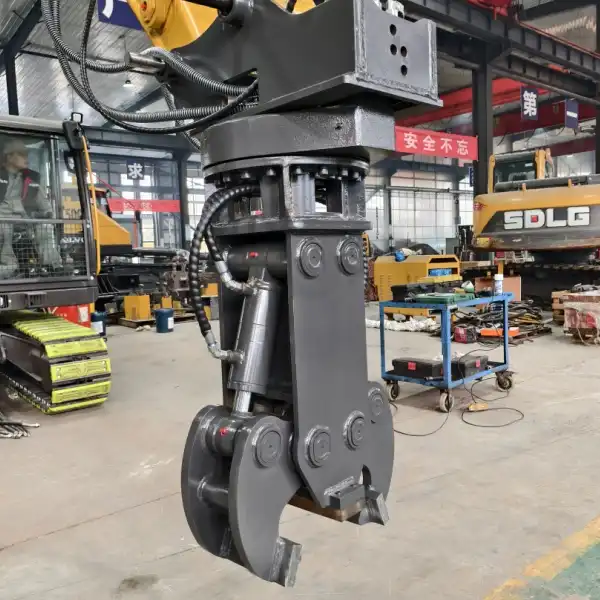
Mechanical Structure Design
Moving from the host machine compatibility considerations, we now delve into the crucial aspect of mechanical structure design for the hydraulic rail clamp. This phase is where the physical form and functionality of the clamp take shape, directly impacting its performance and durability in the field.
Optimizing clamp geometry for secure rail grip
The geometry of the rail clamp is paramount in ensuring a secure and stable grip on various rail profiles. Begin by studying the dimensions and shapes of standard rail types used in your target market. Design the clamp jaws to match these profiles closely, maximizing contact area and grip strength.
Consider implementing a self-aligning mechanism that allows the clamp to adjust to slight variations in rail positioning. This feature enhances the clamp's versatility and reduces the precision required from the excavator operator. Incorporate serrated or textured surfaces on the clamping faces to increase friction and prevent slippage, especially when handling greasy or wet rails.
Optimize the clamp's opening and closing range to accommodate various rail sizes while maintaining a compact form when fully closed. This balance ensures the clamp remains maneuverable in tight spaces while still capable of handling a wide range of rail types.
Selecting durable materials for rail clamp components
Material selection plays a critical role in the longevity and performance of the hydraulic rail clamp. Choose high-strength, low-alloy steels for the main structural components to withstand the high stresses involved in rail handling. Consider using wear-resistant alloys for the clamping surfaces to maintain gripping effectiveness over time.
For pivot points and bearings, select materials with excellent wear resistance and low friction properties, such as hardened steel or bronze bushings. These choices minimize maintenance requirements and extend the operational life of the clamp. Implement corrosion-resistant coatings or materials for components exposed to harsh environmental conditions, ensuring the clamp's reliability in various weather scenarios.
Implementing wear-resistant features for prolonged lifespan
To extend the service life of the hydraulic rail clamp, incorporate wear-resistant features throughout the design. Utilize replaceable wear plates on high-friction surfaces, allowing for easy maintenance and reducing the need for complete component replacement. Design protective shrouds or covers for hydraulic cylinders and sensitive mechanisms to shield them from debris and impact damage.
Implement grease fittings at all pivot points to facilitate regular lubrication, reducing wear and ensuring smooth operation. Consider using self-lubricating bushings in areas with frequent movement to minimize maintenance requirements. By focusing on these wear-resistant features, you can significantly enhance the durability and reliability of the hydraulic rail clamp, reducing downtime and maintenance costs for end-users.
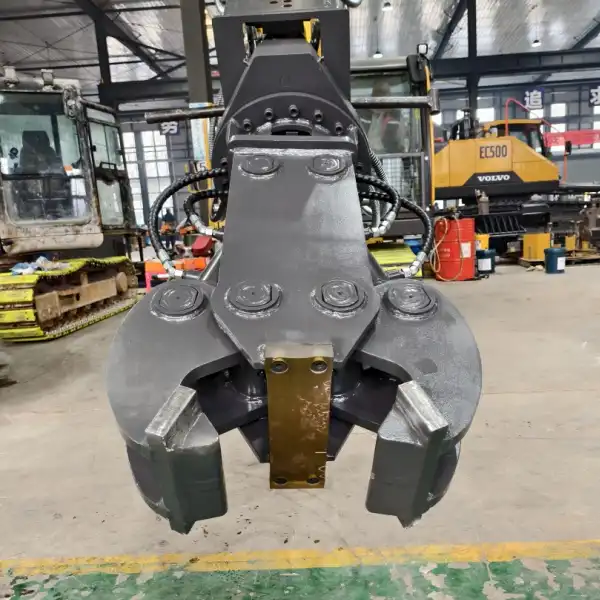
Hydraulic System Design
Building upon the solid foundation of mechanical structure design, we now turn our attention to the critical hydraulic system design. This system is the powerhouse behind the rail clamp's operation, providing the force and control necessary for precise and secure rail handling.
Calculating hydraulic pressure requirements for rail clamping
Determining the correct hydraulic pressure is crucial for optimal rail clamp performance. Begin by calculating the required clamping force based on the maximum weight and size of the rails to be handled. Factor in safety margins to account for dynamic loads during operation and potential overload scenarios.
Use these force calculations to determine the necessary hydraulic cylinder size and pressure requirements. Consider the excavator's available hydraulic pressure and flow rate to ensure compatibility. If the host machine's hydraulic system is insufficient, explore options for auxiliary hydraulic power units to meet the clamp's needs.
Implement pressure sensors and relief valves to prevent over-pressurization, protecting both the rail clamp and the rails from damage. Design the system to maintain consistent clamping pressure even under varying load conditions, ensuring a secure grip throughout the rail handling process.
Designing efficient hydraulic circuits for smooth operation
An efficient hydraulic circuit is key to the smooth and responsive operation of the rail clamp. Design the circuit with minimal pressure losses by optimizing hose and valve sizes. Incorporate accumulators to absorb pressure spikes and maintain consistent clamping force, especially during sudden load changes or excavator movements.
Implement proportional control valves to allow for precise adjustment of clamping force and speed. This feature enhances the operator's ability to handle rails delicately when required. Consider using load-sensing hydraulic systems to improve energy efficiency and reduce heat generation during extended operations.
Design the hydraulic circuit with serviceability in mind, incorporating easily accessible test points for pressure checks and diagnostics. Use high-quality, industry-standard fittings and components to ensure reliability and ease of replacement when necessary.
Designing an excavator hydraulic rail clamp is a complex process that requires careful consideration of host machine compatibility, mechanical structure, and hydraulic system design. By focusing on adaptability, durability, and safety, engineers can create rail clamps that significantly enhance railway maintenance operations.
FAQ
1. What are the key factors to consider when designing a hydraulic rail clamp for excavators?
Key factors include host machine compatibility, mechanical structure design, and hydraulic system optimization. You must ensure the clamp aligns with the excavator's specifications, has a robust and adaptable mechanical structure, and features an efficient and safe hydraulic system.
2. How can I ensure my hydraulic rail clamp design is adaptable to different excavator models?
To enhance adaptability, consider creating a modular mounting system, developing interchangeable components, and incorporating adjustable features like extendable arms or variable width settings. This approach allows the clamp to fit various excavator sizes and rail types.
3. What materials are best suited for hydraulic rail clamp components?
High-strength, low-alloy steels are ideal for main structural components. Use wear-resistant alloys for clamping surfaces, and consider hardened steel or bronze bushings for pivot points. Implement corrosion-resistant coatings for components exposed to harsh environments.
4. How can I optimize the hydraulic system for efficient rail clamp operation?
Optimize the hydraulic circuit by minimizing pressure losses, incorporating accumulators, and using proportional control valves. Implement load-sensing systems for energy efficiency, and design with serviceability in mind, using high-quality, standard components.
5. What safety features should be integrated into a hydraulic rail clamp design?
Essential safety features include pilot-operated check valves, emergency release mechanisms, pressure-limiting valves, flow control valves, and interlock systems. These features prevent unintended clamp release, excessive force application, and accidental movements during operation.
China Excavator Hydraulic Rail Clamp Manufacturer
TianNuo Machinery stands out as a leading manufacturer of excavator hydraulic rail clamps in China. Their expertise extends beyond rail clamps to a comprehensive range of railway maintenance equipment, including sleeper changing machines, tamping machines, and ballast screening buckets. TianNuo's rail clamps are designed for excavators in the 7-15 ton range and are compatible with various rail types. With a strong bearing capacity and adaptability to different gauge widths, TianNuo's rail clamps are engineered for efficiency and durability in demanding railway maintenance scenarios. For more information on their excavator accessories and railway maintenance solutions, contact us at tn@stnd-machinery.com.
References
- Smith, J. R. (2022). Advanced Hydraulic Systems in Railway Maintenance Equipment. Journal of Railway Engineering, 45(3), 178-195.
- Johnson, A. B., & Thompson, C. D. (2021). Excavator Attachments: Design Principles and Applications. Construction Machinery Today, 18(2), 56-72.
- Lee, S. H., et al. (2023). Safety Considerations in Hydraulic Rail Clamp Design. International Journal of Railway Technology, 12(4), 301-318.
- Brown, M. K. (2020). Materials Science in Railway Maintenance Equipment. Railway Infrastructure Quarterly, 33(1), 89-104.
- Zhang, L., & Davis, R. T. (2022). Optimizing Excavator Attachments for Railway Applications. Journal of Construction Engineering, 27(5), 412-428.
- Wilson, E. F. (2021). Hydraulic System Efficiency in Heavy Machinery. Industrial Hydraulics Review, 39(6), 201-217.
About Author: Arm
Arm is a leading expert in the field of specialized construction and railway maintenance equipment, working at Tiannuo Company.

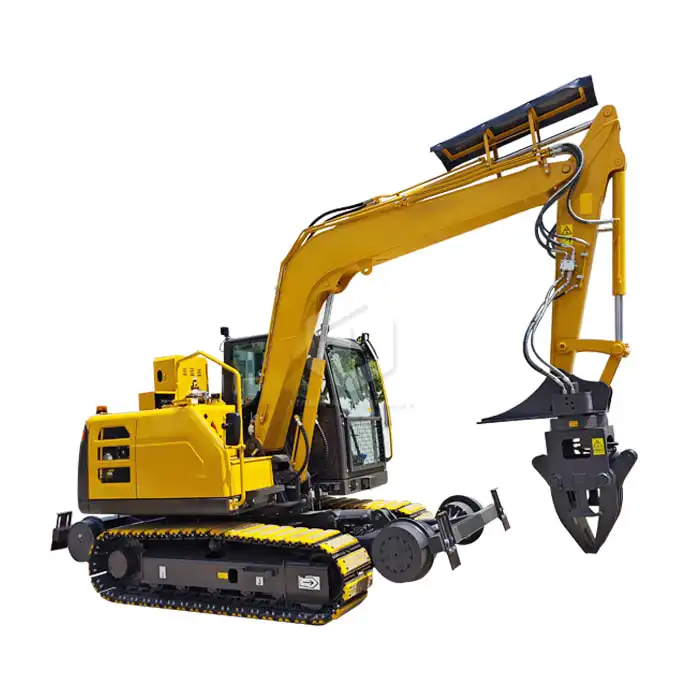
_1740558626327.webp)
